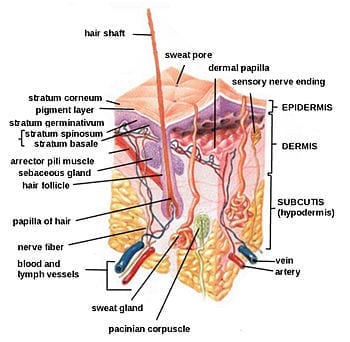
A group of researchers from Sweden have provided further evidence that illegal drugs can be detected in the breath, opening up the possibility of a roadside breathalyzer test to detect substances such as cocaine, amphetamines and cannabis.
Using a simple, commercially available breath sampler, the researchers have successfully identified a range of 12 substances in the breath of 40 patients recruited from a drug emergency clinic in Stockholm.
Their findings have been published today, 26 April, in IOP Publishing’s Journal of Breath Research.
Blood, urine and saliva are the most popular methods for detecting illegal drugs and are already used by law enforcement in a number of countries; however, exhaled breath is seen as a promising alternative as it’s easier to collect, non-invasive, less prone to adulteration and advantageous when location becomes an obstacle, such as at the roadside.
Exhaled breath contains very small particles that carry non-volatile substances from the airway lining fluid. Any compound that has been inhaled, or is present in the blood, may contaminate this fluid and pass into the breath when the airways open. The compounds will then be exhaled and can subsequently be detected.
In this study, researchers from the Karolinska Institute in Stockholm collected breath, blood plasma and urine samples from 47 patients (38 males, 9 females) who had taken drugs in the previous 24 hours and were recovering at a drug addiction emergency clinic.
Interviews were also undertaken with each patient to assess their history of drug use.
The breath samples were taken using a commercially available sampling device – SensAbues – and then analysed using liquid chromatography and mass spectrometry.
The portable sampling device consists of a mouth piece and a micro-particle filter. When a patient breathes into the mouth piece, saliva and larger particles are separated from the micro-particles that need to be measured.
The micro-particles are able to pass through and deposit onto a filter, which can then be sealed and stored ready for analysis. Breath samples were analysed for twelve substances.
Alprazolam and benzoylecgonine were detected in exhaled breath for the first time, whereas for methadone, amphetamine, methamphetamine, cocaine, morphine, 6-acetylmorphine, tetrahydrocannabinol, buprenorphine, diazepam and oxazepam, the results confirmed previous observations.
“Considering the samples were taken 24 hours after the intake of drugs, we were surprised to find that there was still high detectability for most drugs,” said lead author of the study Professor Olof Beck.
The Latest Bing News on:
Roadside drug testing
- Why Braydon Trindall police test should not trigger NRL’s illicit drug policyon April 24, 2024 at 8:24 am
Sharks player Braydon Trindall will avoid carrying a crucial NRL strike against his name for illicit drug-use because his failed test wasn’t conducted by official anti-doping agency WADA.
- NRL star Braydon Trindall charged after allegedly failing roadside drug and alcohol teston April 23, 2024 at 4:33 pm
NRL star Braydon Trindall has been charged by police after allegedly failing a roadside alcohol and drug test on Monday morning.
- More details emerge as Sharks half stood down after failing roadside alcohol and drugs teston April 23, 2024 at 2:11 am
NSW Police confirmed in a statement on Tuesday afternoon that a 24-year-old man who had been driving on Captain Cook Drive, Caringbah about 9.45am on Monday, was stopped for a random breath test. “The ...
- Braydon Trindall stood down by Cronulla Sharks after being charged with failing roadside drug and alcohol testson April 22, 2024 at 11:17 pm
Cronulla believes it is more important for Braydon Trindall to focus on his 'health and welfare issues' after he allegedly failed roadside illicit drugs and alcohol tests.
- NRL 2024: Sharks star Braydon Trindall fails roadside alcohol and drugs tests, won’t play this weekendon April 22, 2024 at 10:04 pm
Braydon Trindall will not play this weekend and is now being investigated by the NRL integrity unit after the Sharks five-eighth failed initial roadside alcohol and illicit drugs tests early on Monday ...
- Sharks star fails alcohol and illicit drugs test while holding suspended licenceon April 22, 2024 at 9:39 pm
Cronulla Sharks five-eighth Braydon Trindall has been charged with drink driving while holding a suspended licence, and is awaiting further results on an alleged potential positive cocaine reading, ...
- Sharks in limbo as Trindall 'fails roadside tests'on April 22, 2024 at 5:47 pm
Cronulla NRL star Braydon Trindall has allegedly failed roadside drug and alcohol tests, with the club standing the playmaker down with immediate effect.
- Thousands of Australians use medicinal cannabis. Some say drug testing hasn't caught upon April 22, 2024 at 12:38 pm
Some experts believe Australia's zero-tolerance drug policy fails to account for whether a person is impaired by illicit substances.
- Sharks star Braydon Trindall stood down after failing roadside alcohol and illicit drugs testson April 22, 2024 at 10:15 am
Cronulla Sharks five-eighth Braydon Trindall has been stood down indefinitely after failing an initial roadside alcohol and illicit drug tests on Monday morning. Trindall was charged with ...
- Island driver refused roadside drug test telling police "it is just my right"on April 21, 2024 at 5:00 pm
An Isle of Wight driver admitted consuming ‘cannabis eatables’ but said he would rather go to court than cooperate with a drug test. David Sanders ... For this reason, he refused to cooperate with a ...
The Latest Google Headlines on:
Roadside drug testing
[google_news title=”” keyword=”roadside drug testing” num_posts=”10″ blurb_length=”0″ show_thumb=”left”] [/vc_column_text]The Latest Bing News on:
Drug detection
- What do weight loss drugs mean for a diet industry built on eating less and exercising more?on April 28, 2024 at 6:03 am
They include semaglutide, the drug in Ozempic and Wegovy ... operator Life Time launched a membership program last year that offers comprehensive medical testing, personalized training and a host of ...
- Former nurse who got addicted to heroin & METH opens up about drug useon April 28, 2024 at 5:44 am
Brian broke down in tears as he opened up about how he would secretly steal medicine and needles to fuel his rampant drug addiction while working as an RN in the ICU.For years, he said he lived a ...
- Can Genetic Testing Reveal the Right Antidepressant?on April 27, 2024 at 6:23 am
Pharmacogenetic testing is also insightful about how non-pharmaceutical interventions, such as dietary supplements like l-methylfolate or magnesium, might benefit patients. The test even offers ...
- Multiple agencies issue alerts on 'highly pathogenic avian flu' after detection in milkon April 26, 2024 at 6:10 pm
The World Health Organization urged the public not to consume raw milk, and the FDA said although they're not common, sporadic human infections have occurred.
- This Biotech Startup Aims To Speed Up Drug Testing On Animalson April 26, 2024 at 3:29 am
Gordian Biotechnology’s platform allows for potentially hundreds of gene therapies to be tested in an animal at the same time — without harming it.
- Drug Of Abuse Testing Market Projected at USD 11.8 Billion by 2032 | Market.uson April 25, 2024 at 12:15 am
According to a recent report by Market.us, the Global Drug of Abuse Testing Market size is expected to be worth around USD 11.8 Billion by 2032 from USD 6.8 Billion in 2023, growing at a CAGR of 6.5% ...
- Your Phone Could Soon Snitch On You For Consuming Drugson April 24, 2024 at 1:04 pm
A team of experts at Grenoble Alpes University Hospital in France has developed a swab test that can detect drugs on your smartphone. Here's how it works.
- Federal Register Proposes Adding Fentanyl, Removing MDMA From Drug Testing Panelson April 24, 2024 at 7:06 am
A recent proposal is considering adding fentanyl to the Department of Health & Human Services drug panel for testing, and removing MDMA/MDA.
- Different Technologies for Drug Testingon April 23, 2024 at 5:00 pm
Recreational marijuana laws are forcing employers to reassess drug testing to ensure workplace safety. New technologies are helping them contend with this challenge. A drug testing expert joins the ...
- Kingsport school board considering drug testing policyon April 22, 2024 at 8:21 pm
The Kingsport Board of Education (BOE) is considering implementing a drug testing policy for high school students who participate in extracurricular activities. “That’s basically an activity that a ...
The Latest Google Headlines on:
Drug detection
[google_news title=”” keyword=”drug detection” num_posts=”10″ blurb_length=”0″ show_thumb=”left”]










